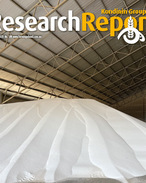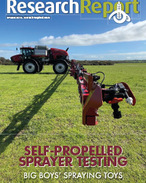Sequestration projects generate credits by removing CO2 from the atmosphere, absorbing it and then storing it permanently. Forms of sequestration include the absorption of carbon by plants as they grow and increase organic matter in the soil.
Table 2.3 summarises sequestration project types on the positive list. Sequestration activities include reforestation, revegetation, restoring rangelands and protecting native forests or vegetation that would otherwise be cleared.
|
|
Table 2.3: Carbon sequestration project types on the positive list |
|
Project type |
||
|
Carbon sequestration in plantings can generate ACCUs only if the carbon is stored permanently. If it is subsequently released back into the atmosphere, for example because vegetation is cleared, it does not offset emissions and does not generate an ACCU.
For this reason, under the original CFI legislation, sequestration projects were subject to a 100-year permanence obligation.
The permanence obligation ensures that credits are for a genuine form of abatement. If carbon stores are not maintained, or the vegetation is cleared, the emissions are released again into the atmosphere and the project would have had no net effect on emissions.
2.3.1 Permanence under the ERF
The permanence obligation has been modified under the ERF, allowing the option of a 25-year permanence requirement.
Proponents of sequestration projects can nominate a 25- or 100-year permanence period. Projects with a 25-year permanence period will be subject to a 20% discount on the number of credits that would otherwise be issued for the project.
Existing sequestration projects can request a 25-year permanence period and relinquish credits as necessary to reflect the 20% crediting discount.
Explore the full Workshop Manual: The business case for carbon farming: improving your farm’s sustainability (January 2021)
Read the report
RESEARCH REPORTS
1. Introduction: background to the business case
This chapter lays out the basic background and groundwork of the manual
RESEARCH REPORTS
1.2 Being clear about the reasons for participating
Introduction: background to the business case
RESEARCH REPORTS
1.4 Working through the business case for carbon farming
Introduction: background to the business case
RESEARCH REPORTS
1.5 Factors determining project economics
Introduction: background to the business case
RESEARCH REPORTS
1.8 Important features of the business case
Introduction: background to the business case
RESEARCH REPORTS
2. How carbon is farmed under the ERF
This chapter considers in detail the activities that constitute carbon farming
RESEARCH REPORTS
2.5 Carbon farming under the Emissions Reduction Fund
How carbon is farmed under the ERF
RESEARCH REPORTS
3. The policy context and the price of ACCUs
This chapter takes a broad look at the policy context for carbon farming























